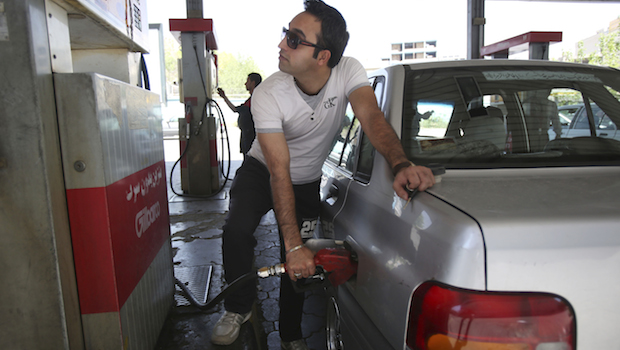Contrary to what happened in previous years, fuel price hikes—or more accurately, the partial reduction of fuel subsidies—announced by the Iranian government a few days ago passed without major protests or palpable social unrest. This means that the general public in Iran have understood and accepted this step, despite its impact on their quality of life.
The calm understanding of this can likely be attributed to two things. First, the new government under President Hassan Rouhani entered office with a popular mandate, with Iranians hoping for policy change. Second, Iran’s media paved the way for this step by explaining that reforming the subsidy system is an inescapable necessity in order to achieve true development in the future.
On the other end of the Middle East, Egypt is standing on the same threshold. It needs to address the costs of subsidies on energy and staple foods. Egypt has a different subsidy policy from Iran, but these two different policies ultimately have a similar impact on each country’s national economy and domestic politics. As Iran has started to do, Cairo is expected to start reforming energy subsidies soon.
A recent report by the International Monetary Fund (IMF), Energy Subsidies in the Middle East and North Africa: Lessons for Reform, says that energy subsidies in the region account for half of all energy subsidies globally and 8.6 percent of regional GDP. While the objective of a subsidy is to make life easier for the poor, its beneficiaries are most often among the better-off. In addition, subsidies squeeze governments’ budgets at the expense of more vital spending, such as healthcare and education.
But the report also acknowledges that reforming energy subsidy policy is a difficult task, both technically and politically. Therefore, it says, the timing and duration of reforms should be carefully planned in advance. Another important factor to ensure the success of subsidy reforms lies in conducting a media campaign to increase awareness about the cost of subsidies and the benefits of reform. This step is vital in rallying the largest possible political and public support.
This was the fatal mistake made by the Egyptian government in 1977 when it tried to push through a series of subsidy reforms. These subsidy reforms were far less drastic than the reforms being undertaken today; however, the difference is that the government failed to prepare the public or explain the reasons behind the change. In January 1977, widespread protests—known as the Bread Riots—broke out in major Egyptian cities. In terms of the number of protesters and the scale of their activities, these riots were as large as the January 2011 revolution. Then-president Anwar Sadat was forced to repeal the reforms and deploy the army to maintain security. Successive Egyptian governments remained fearful of taking any action on subsidies. Although they were aware of the problem, they avoided finding a solution to it. Had the 1977 government in Egypt taken the necessary steps to ensure the success of its policies, Egypt’s economy would be much stronger than it is today.
The situation was similar in Iran. Three presidents unsuccessfully tried to reform Tehran’s subsidy program, which was costing the government somewhere between 70 and 100 billion dollars each year, the equivalent of a quarter of the country’s GDP. This figure would have continued to rise and rise until the necessary measures were taken. Ironically, it was former president Mahmoud Ahmadinejad who proposed the subsidy reform plan to parliament, a step which stands in contrast to his populist political leanings. At the end of the day, facts impose themselves on governments, not the other way around.
In Egypt, subsidies make up a third of government spending and 13 percent of GDP. Total energy subsidies were three times the spending on education and seven times the expenditure on healthcare in 2011, according to the IMF report. Healthcare and education are the most important sectors for the progress of any given society. After the government has spent all this money, there is nothing left for investment—and so it is forced to borrow from banks, which in turn find it safer to lend to governments rather than private-sector companies that might create job opportunities on the ground.
The problem of reforming the subsidy system is not limited to Egypt and Iran in the Middle East, but these two countries have something in common: large populations. Evading or postponing reform is not a solution. The primary objective of subsidies is to protect the poor within the framework of achieving necessary social balance. However, if this system—as evidenced over the past years—does not reach its target demographic and impedes development, then it is the mission of competent governments to search for a solution.
